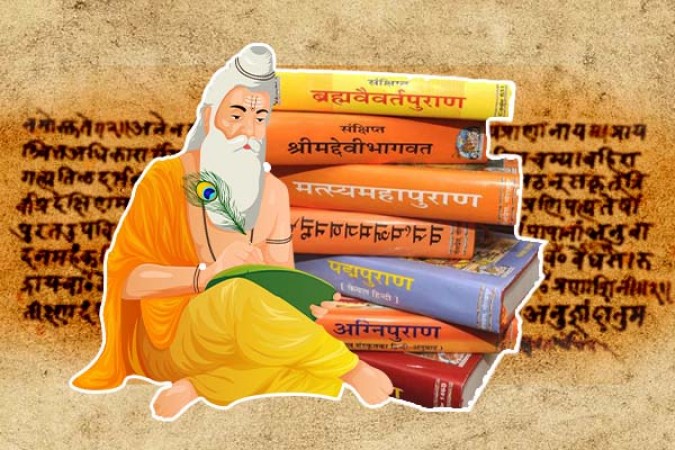
The Puranas are a genre of ancient texts that form a significant part of Hindu religious literature. These texts are considered sacred scriptures and are integral to the cultural and spiritual fabric of India. The term "Purana" comes from the Sanskrit language, which means "old" or "ancient." The Puranas serve as repositories of mythological stories, historical accounts, cosmology, genealogy, philosophy, and moral teachings. They play a crucial role in preserving and propagating India's rich cultural heritage. The Puranas have been cherished for millennia as repositories of divine knowledge, wisdom, and spiritual insight. They continue to play a vital role in shaping the religious and cultural identity of India. The stories, lessons, and teachings found in these texts have inspired generations, transcending time and space, making the Puranas an enduring testament to the richness and profundity of Indian mythology and history.
The exact origin of the Puranas is difficult to ascertain, as they were transmitted orally for centuries before being recorded in written form. Traditionally, the Puranas are believed to have been composed by sage Vyasa, the compiler of the Vedas, although their compilation occurred over several centuries, beginning around 300 BCE and continuing until the medieval period.
The Puranas are classified into two main categories:
Mahapuranas: There are 18 major Puranas, considered to be the most important. These include texts like Vishnu Purana, Shiva Purana, Bhagavata Purana, and Markandeya Purana, among others. These Mahapuranas glorify various deities, narrate their stories, and elaborate on their significance in Hindu mythology.
Upapuranas: These are the minor Puranas, numbering around 18 or more, depending on different classifications. They cover diverse topics such as geography, astronomy, rituals, and historical events.
The Puranas are vast and cover a wide array of subjects, including creation myths, genealogies of gods and sages, cosmology, the cycle of time (yugas), stories of various incarnations of deities (avatars), and the concept of dharma (righteousness and duty). One of the essential features of Puranas is the retelling of the epics, the Ramayana and the Mahabharata, with additional details and insights. They offer a deeper understanding of the moral and philosophical aspects of these epics. The Puranas also provide elaborate descriptions of the universe, its creation, and the cycles of birth, death, and rebirth. Concepts like karma (law of cause and effect) and moksha (liberation from the cycle of reincarnation) are recurrent themes found in these texts. The Puranas hold immense significance in Hinduism for several reasons:
Cultural Preservation: They play a vital role in preserving ancient Indian culture, traditions, and practices, acting as a bridge between the Vedic period and modern Hinduism.
Religious Practices: Puranas provide guidance on rituals, festivals, and ceremonies, offering insights into the devotional practices of Hindus.
Moral and Philosophical Lessons: Through their diverse stories, the Puranas impart essential moral and philosophical teachings that guide people on righteous living and ethical conduct.
Encyclopedic Knowledge: These texts contain a vast amount of information on various subjects, including history, geography, astrology, and medicine, giving readers a comprehensive understanding of ancient Indian wisdom.
also read - Surya Dev: Sun God
These are the five famous caves of Lord Shiva, that you should visit in Sawan
Dive into the Soul of Indian Music: Exploring the Depths of Major Ragas